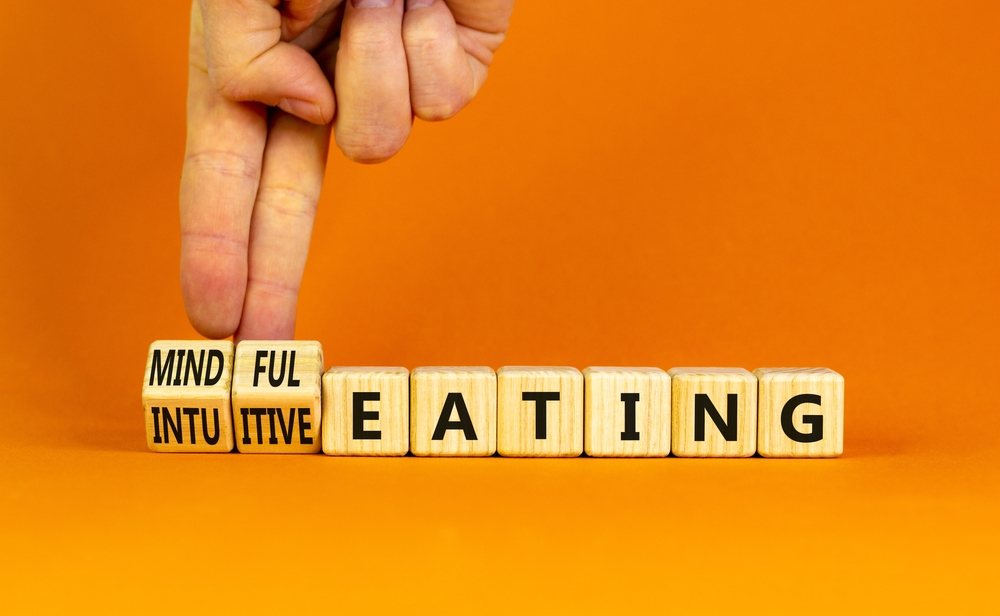There is a term that has recently appeared on social media, on the internet and in many places; intuitive eating. This type of nutrition, which breaks the dietary norms we are used to, is actually not new. We asked the expert how it works and how it is applied.
Two dietitians, Evelyn Tribole and Elyse Resch, noticed how traditional diets affected their families and published a book in 1995 called Intuitive Eating: A Revolutionary Program That Works. It all starts with that. For over twenty-five years, these anti-fasting approaches are now resurgent. When you write #intuitiveeating (#intuitive) on Instagram, you should not be surprised at the 1.8 million results you see. Of course, we cannot deny the contribution of social media to intuitive eating. Thanks to him, interest in this type of nutrition increased; Some began to investigate what had happened. There is actually a very simple reason behind its popularity; a mass of people who are tired of applying diet lists…
The goal is not to lose weight
The first and most important point in intuitive eating is that your goal is not to lose weight. Instead, knowing yourself, reconnecting with your body is the main reason. Just as a baby feels his hunger by himself, it is aimed to teach this to adults again.
Learning to trust your body and establishing a healthy relationship with food are among the principles. His approach is as follows; listening to your physical and emotional hunger. Although it seems simple, it can force people to implement it.
It is actually quite easy to grasp, but it can be difficult to implement for people who have always acted according to diet rules. Because what we were taught when we dieted was not to listen to our hunger. We also had to always avoid cultural, environmental, emotional concepts that affect real hunger. However, if we can catch an awareness of all these concepts, we can continue to eat intuitively. It’s also a case of deciphering true hunger and emotional hunger for snacking due to boredom, stress, and social situations.
The trick is not to reduce what you eat to zero, but to make you discover what you are eating for what purpose. By expert dietitians; Instead of focusing on what we eat, it is recommended that we enjoy the moment by focusing on the relationship we establish with food.
Ask yourself these questions before you eat
“How do I feel when I eat? What nourishes me the most? How can I relate this meal to pleasure?” These questions are the first step towards self-awareness. The first rule of intuitive eating is that there are no rules.
You should enjoy the food you choose and be kind to your body. Enjoyment is a subjective term, but your body should feel nourished when it needs it. When you’re under-eating or over-eating, you’ll guess that feeling physically unwell is no pleasure at all. The important thing is to determine the balance stage and to make eating satisfying. For more, you can consult an expert and get more detailed information about intuitive eating.
What are the most basic principles of intuitive eating?
There are ten fundamental principles of intuitive eating:
- Rejecting the diet mentality
- Respecting hunger
- Making peace with food
- Going against the diet police
- Feeling the satiety
- Discovering satisfaction
- Dealing with emotions without using food
- Respecting your body
- Feeling the difference by moving
- Treating yourself well
To put it in simpler terms, there are also the items that we will count among the basic principles at the moment. Allowing unconditional eating, listening to physical hunger, and avoiding emotional eating and eating for physical reasons…
How to start intuitive eating?
Review your eating behaviors and attitudes without judging yourself. Discover your hunger. Aim to eat when you’re hungry. Avoid hunger that will force you in the beginning. Stop when you’re full.
What are the most difficult things for people who have experienced this?
Intuitive eating is not a method of controlling body weight. Eating behavior intervention. For this reason, people trying to switch to intuitive eating may have difficulty distinguishing between physical and emotional hunger at the beginning. In addition, those who experience it can expect this diet to lose weight. Losing weight can be a result, but not the main goal.
What does this nutrition model mean?
It aims to eat without guilt and remorse, by listening to the signals of hunger and satiety, and by enjoying food. In intuitive eating, you are led to food by engaging in eating behavior only to satisfy your physical hunger, not to cope with emotional fluctuations. It is eating without guilt and remorse, listening to the signals of hunger and satiety, and enjoying eating.
What is the difference between emotional hunger and physical hunger?
Emotional hunger is the urge to eat because of any emotional state. It is the type of unconscious and uncontrolled eating. We can say that physical hunger is taking calories from food to meet our daily energy needs. It is the type of eating in which we are conscious of how much we eat, regardless of place and time.
Are there ways to understand our emotional hunger?
It appears suddenly. It can create guilt. It directs to easily available foods. There may be obvious requests such as chocolate and biscuits. Even if the stomach is full, the feeling of hunger continues for a long time.
Can people with eating disorders apply this nutrition model?
Intuitive eating improves impaired eating behaviors. However, it is not the right approach at the beginning for these people with eating disorders. Eating disorder is often considered as a pathophysiological disease that occurs together with mental disorders. These people require medical treatment and control.
Who should not practice the intuitive eating style?
Almost everyone, from young to old, can apply it, except for patients with eating disorders.

